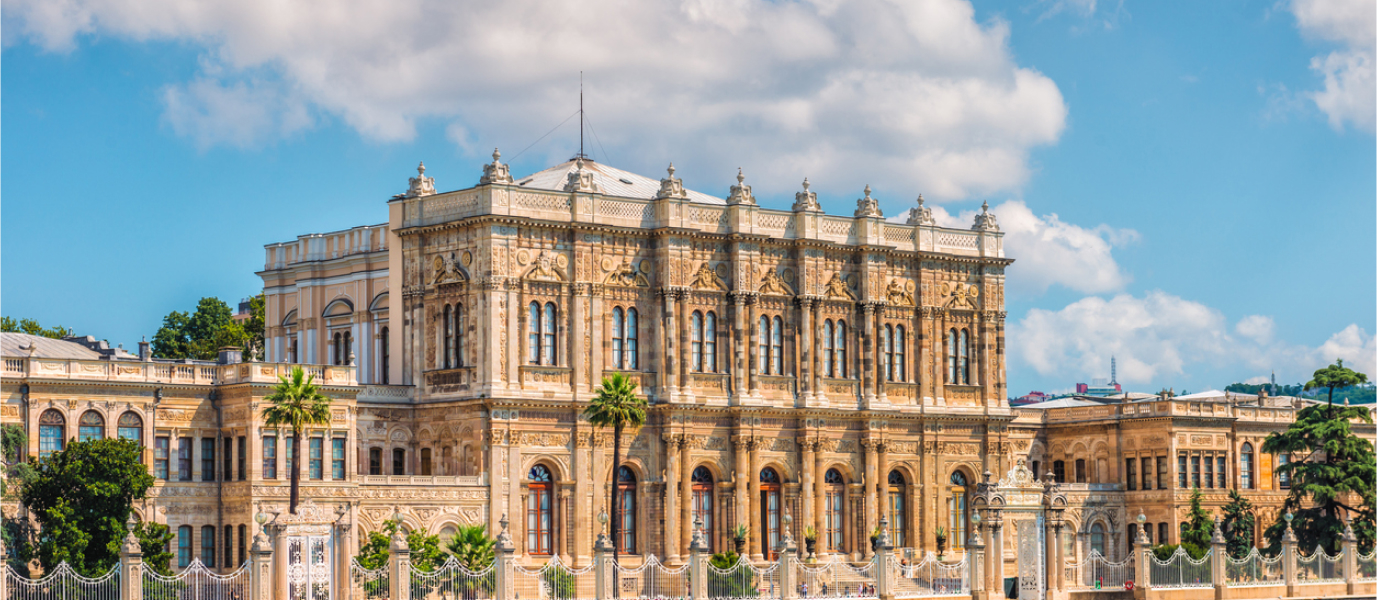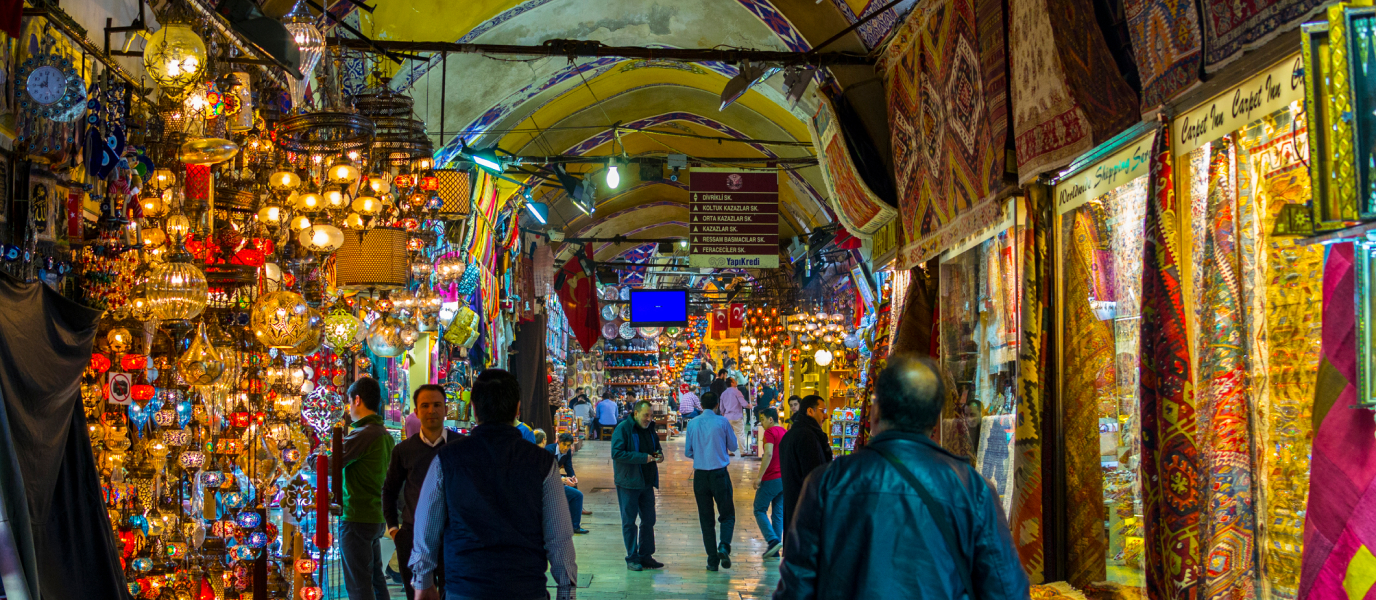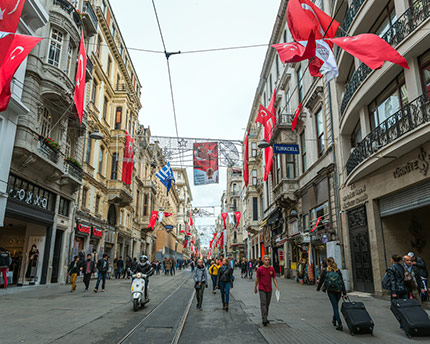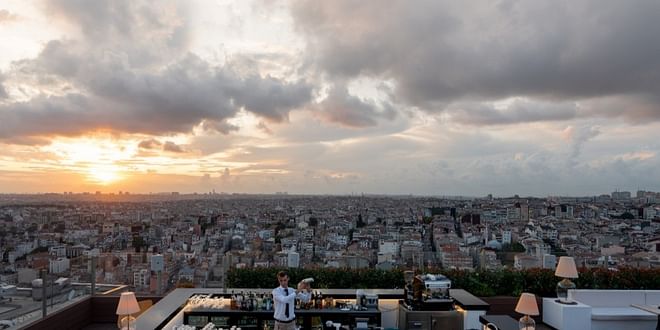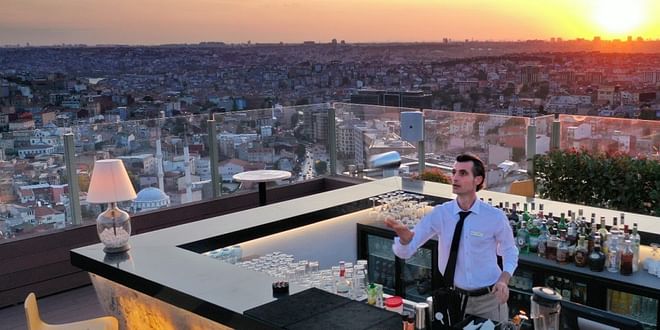In a place like Istanbul with so many monuments, the usual architectural heritage of a large city multiplies. At first, your bucket list may not include Dolmabahçe Palace among so many famous monuments. Nevertheless, this enormous building is a gem. Not only does it stand out because of its size, since it is one of the largest palaces in Turkey, but its combination of styles, incredible gardens and situation along the Bosphorus will take your breath away.
In fact, most people realise its magnificent presence when cruising along the Bosphorus, while the sun sets in the horizon. Do not miss this opportunity and cross the Dolmabahçe Palace gates.
Dolmabahçe Palace and its historical context
This colossal building is located in Beşiktaş district in Dolmabahçe bay, on the European coast of the Bosphorus. The land on which the palace was built was gradually reclaimed from the sea during the 18th century. The Ottoman monarchy had already built summer palaces and created gardens there previously.
Topkapi Palace, which had been the Ottoman Empire’s administrative headquarters since 1465, was becoming out of date well into the 19th century. That is why Sultan Abdulmejid I took the opportunity to move the court to a building with more modern luxuries and a more European style. The renovation work at Dolmabahçe Palace was undertaken between 1842 and 1853. The result was a Neo-Baroque building with 285 rooms occupying 45,000 square metres.
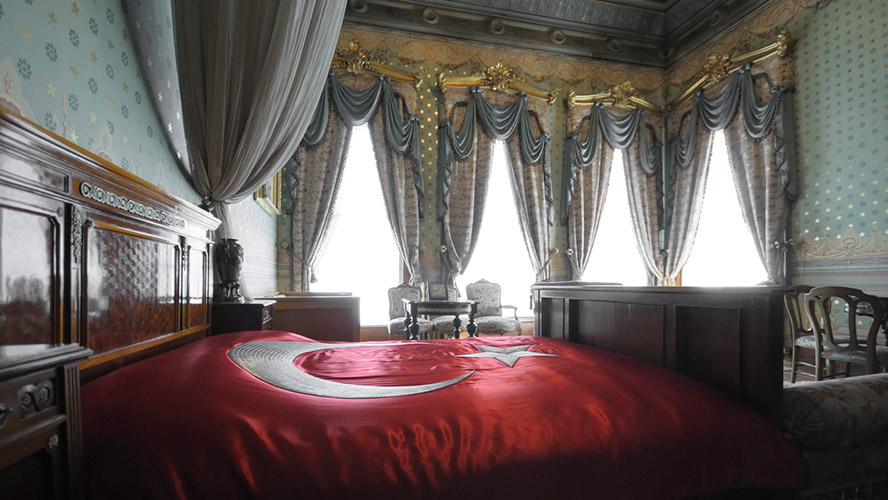
It was used as the official residence of the Turkish sultans until 1923, when Mustafa Kemal Atatürk founded the Republic of Turkey and was elected its first president. Although the capital was moved to Ankara, Atatürk maintained Dolmabahçe as the residence for his visits to Istanbul. In fact, during his last years, when his health was already critical, he spent them in the palace. He died on 10 November 1938 in one of its rooms. Today that room forms part of the grand museum in which Dolmabahçe was converted in 1984.
Architectural details and the palace façade
The building was a turning point in Istanbul’s architecture since the European spirit which began in the 19th century was becoming increasingly evident. Dolmabahçe is an excellent example of this cultural exchange.
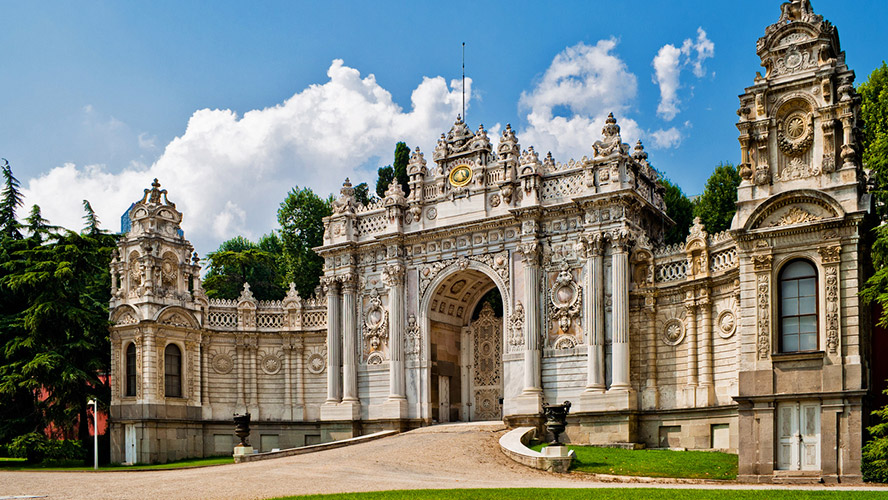
The main architects at the time participated in the project and the result takes the visitors’ breath away. The palace structure is one of the most striking details since it is divided into three well differentiated parts: the Selamlik, for matters of government; the Harem, for the private life of the sultan and his family; and the ceremonial rooms.
Inspired directly by Versailles, its Neo-Baroque style blends in with the Renaissance and Neoclassical forms, abandoning all traces of Eastern influences. The impressive marble façade, with a length of over 600 metres, welcomes us while it prepares us for the luxury to come inside. The gardens surround all the exterior, along the Bosphorus.
Things to see at Dolmabahçe Palace
As we already said, this palatial monument is divided into several sections, which you will visit during a guided tour. The four main areas are as follows:
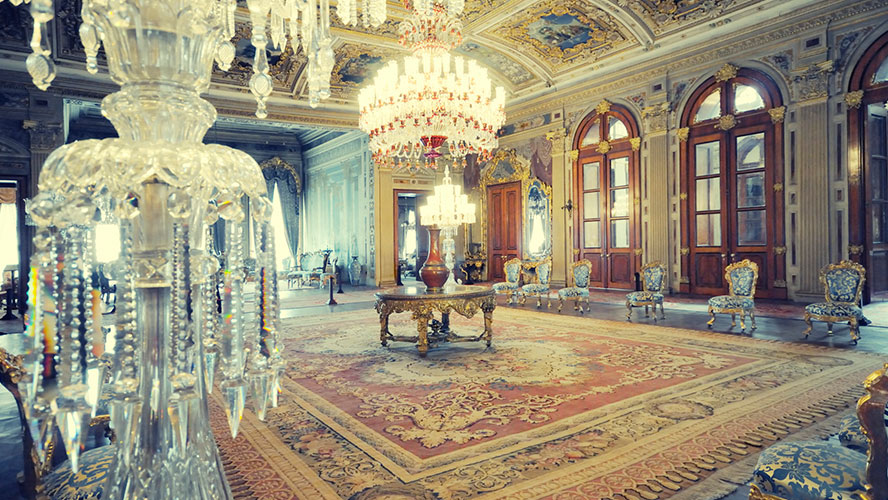
Selamlik
This is the most beautiful part of the palace since it has numerous attractions. It is where the administrative headquarters were located and where the official matters were dealt with. The majestic crystal staircase is one of the palace’s highlights. In a horseshoe shape, the staircase balustrade is fully built with Baccarat crystal, combining elements in bronze and mahogany. The Throne Room has a colossal size and a Bohemian crystal chandelier (weighing over four tonnes), which was a gift from Queen Victoria. The ornaments are completely overwhelming.
Harem
This was where the private rooms of the sultan and his family were located. Remember that, although the palace was inspired by Western influences, the rules stated that the women had to remain in a separate area or harem. In this case, the decoration is much more sober and you can visit the sultan’s personal bedroom.
Clock Museum
In 2004, the former Treasury building at Dolmabahçe was opened as a museum to exhibit the national clock collection belonging to the palaces around the country. Because of their exquisiteness and antiquity, and after undergoing extensive restoration, the clocks are exhibited under protection in these rooms.
Glass Pavilion
This is another sophisticated building in the palace from where the sultan could see the official parades.
Gardens
It is a pleasure to stroll along the delightful gardens at Dolmabahçe, which are also structured based on the palace’s sections. With the Bosphorus as the backdrop, remember to explore its fountains and flora. You will also see the Bird Pavilion, where some species are still being bred.





























































